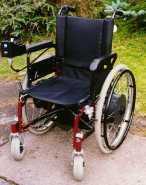 |
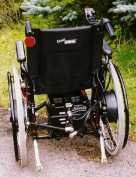 |
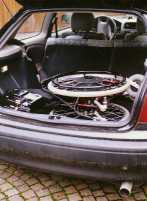 |
| The motors are
in the centre of the wheels. The direction will be regulated with different
wheel speeds. Forward and reverse run is beginning with soft start. Revolve
round a point is possible. The motor also functions as a generator, so
it can be used as a brake. |
Due
to the high efficiency the utilization of smaller batteries is possible,
keeping the same action radius. The same energy of the batteries means
a double action distance compared with traditional motors. A climbing gradient
of 25 % is possible. |
No gear and
the length of motor not more than the length of a standard hub means
that the wheel chair can be folded up very easy and quick. The weight is
clear lower. |
|
|
|
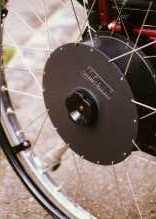 |
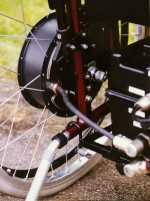 |
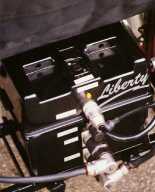 |
| A grip, to turn
outside of the motor, allows to open the electromagnetic safety brake by
hand. In this case the controller is automatically without function. Thus
the wheelchair can be moved like a normal one. |
Each
motor is connected to the controller and power supply by a cable with a
quick release connector. It is a shielded version of a bayonet locking
system. To open the quick release couplings and pull out the connectors
gives a short time to disassemble the wheelchair. |
Batteries (24V)
and microprocessor controller are protected against water in a plastic
case. All control elements - as well as the charger - are fixed by
quick release connectors. |
|
|
|
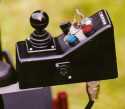 |
 |
Control
device features:
-
electric key-type switch
-
on / off switch
-
3-step switch to get a speed of 2-4-6 km/h
-
joystick
-
battery condition indicator
-
electric hooter
|
|
Power
grip for wheelchair speed, to be used by a person who looks after the wheelchair
user. The control device is without function. It is only possible to go
forward (safety rule). |
|